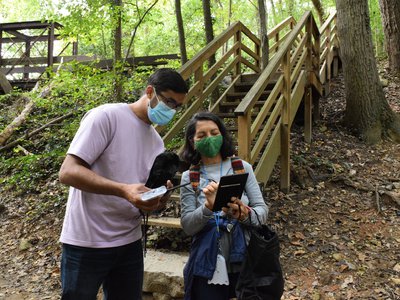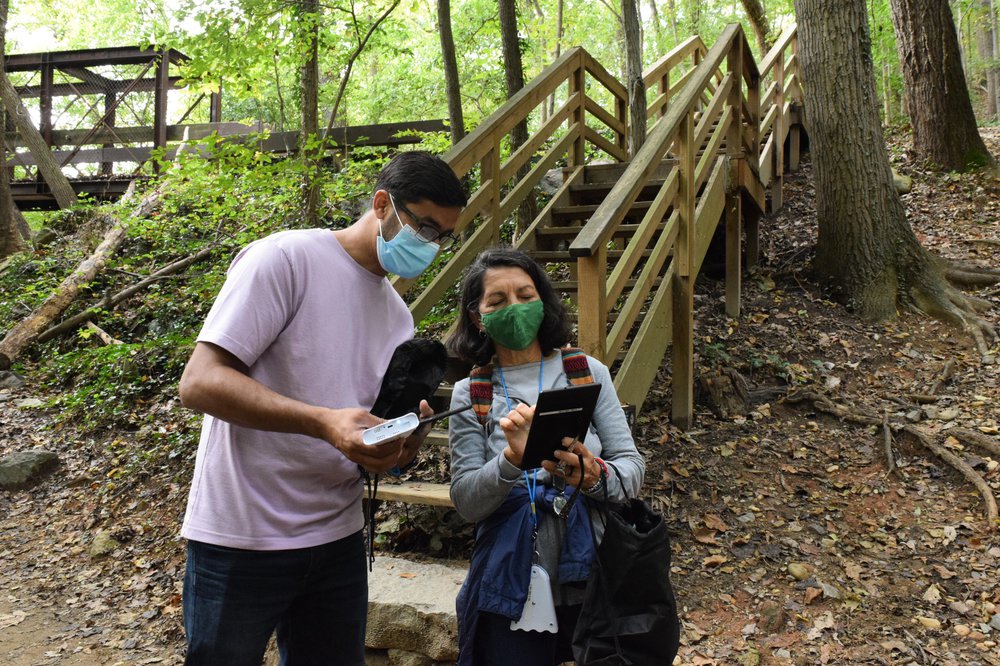Community Scientists Enable Science Museum of Virginia to Reach RVAir Project Milestone
Air Quality Study Reaches 500 Sessions at One-Year Mark, More Residents Needed to Help Reach Next Goal
August 25, 2021
With help from more than 200 volunteers who have been walking and riding around Richmond neighborhoods for the past year, the Science Museum of Virginia’s RVAir program reached the 500th “session” almost exactly 12 months after the start of the data collection events. RVAir is the Museum’s community science project that seeks to understand local air quality, or how clean or polluted the air we breathe is, a priority of the City’s RVAgreen 2050 climate action plan. A session is the term describing the timeframe when someone starts and stops actively recording measurements.
Community science is a collaboration between scientists and public volunteers. It offers participants a better understanding of the role science plays in their day-to-day decisions when they are invited and empowered to be part of the collecting and interpreting process.
In August 2019, the Institute of Museum and Library Services (IMLS) awarded the Museum a three-year $250,000 grant to work with community partners Groundwork RVA and Scott’s Addition Boulevard Association, and supporters City of Richmond Sustainability Office and the Virginia Department of Environmental Quality, to lead teams of resident scientists to assess and guide improvements to air quality in Richmond neighborhoods. The first data collection event took place on August 26, 2020, and reached the 500-session mark milestone this week.


Volunteers from across the Richmond region — including partner organization Groundwork RVA teen members, Boys & Girls Clubs of Metro Richmond students, local college undergraduates, state and local elected leaders, and dozens of families — measure local concentrations of airborne pollution known as particulate matter (PM), a mixture of microscopic particles in the air that has been linked with cardiovascular and respiratory diseases. During each outing, which start and end from various locations around the city, participants carry or attach to their bike or mobility device a small AirBeam II particulate matter sensor which continuously collects data as the volunteer travels on the route.
In addition to the mobile collection efforts, the Museum has partnered with homeowners, businesses, community organizations and schools to host stationary PurpleAir PM monitors. These softball-sized devices stay outdoors collecting data around the clock. Student-led research teams at the University of Richmond and Virginia Commonwealth University have already utilized results from the stationary sensors.
Poor air quality can exacerbate allergy symptoms, aggravate asthma, impede lung function and contribute to diseases such as bronchitis and emphysema. While the Virginia Department of Environmental Quality measures air quality just outside of the metro Richmond region, neighborhood-specific data — which can vary greatly depending on impervious surfaces, transportation hubs, housing density and green spaces — was not available before the RVAir program started.
Information collected through RVAir helps scientists, residents and policy makers understand how a warming climate impacts Richmond, including the health of residents, to inform neighborhood-specific solutions and broader community sustainability plans.
RVAir data is available in real time for anyone to explore. Museum scientists and the project team are assessing the data throughout the project, and will identify trends and areas for further study when the collection events have all concluded.
The Museum will be collecting data for the RVAir program through September 2022. It leads 15-20 outings each month, and can take up to 12 volunteers each time. Upcoming dates, times and locations are regularly added to the Museum’s website.
This project was made possible in part by the Institute of Museum and Library Services MA-20-19-0255-19.